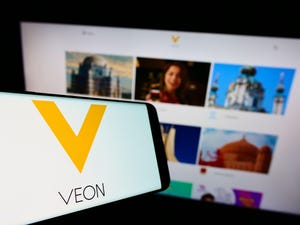Samsung role with Telefónica Germany is trouble for Huawei or Nokia
News that Telefónica has launched its first commercial Samsung site in Germany, and that more will follow, looks bad for the existing vendors.

Samsung continues knocking on the door of Europe's radio access network (RAN) market and telcos seem happy to meet it in the vestibule. Outside a medium-size deal in the UK, this effectively means giving Samsung access to a few sites, rather than a big section of the estate, and seeing what it can do. This week, Telefónica Germany announced the launch of its first Samsung site supporting commercial traffic.
Until now, it has bought its RAN equipment from China's Huawei and Finland's Nokia, dividing the footprint equally between those two vendors, according to earlier research published by Strand Consult, a Danish analyst firm. But Samsung has now replaced one of these vendors at the site in Landsberg am Lech (in Bavaria) and another seven are to follow.
While this may seem insignificant in a network of about 28,000 mobile sites (according to Light Reading's research), stopping at eight that measure up performance-wise would make no sense. "We also expect further discussions about extending to more sites within 2024," said Savas Arikan, the head of Europe business development for Samsung Networks, answering questions by email. For either Huawei or Nokia (and possibly both), then, this deployment sounds like trouble.
Like Europe's other big telcos, Telefónica is committed to bringing more suppliers into a RAN sector still dominated by Ericsson, Huawei and Nokia. It has seized on the concepts of open and virtual RAN as potential catalysts for this diversification. Open RAN is designed to improve interoperability, allowing an operator to combine different vendors instead of buying an entire system from one giant. Virtualization (vRAN), meanwhile, introduces common, off-the-shelf equipment and IT platforms. Those promise economies of scale and the opportunity to share RAN resources with other workloads.
Thanks for trying it first, Vodafone
Unsurprisingly, both receive top billing in this week's update from Samsung, with Telefónica highlighting the attractions. "We see the future potential of open RAN and vRAN technology being a building block within our transformational approach that can help us to automate our network, deploy new updates faster and use network components more flexibly," said Matthias Sauder, Telefónica Germany's director of mobile access and transport networks, by email.
The "template" of vendors looks identical to that extensively trialled by Vodafone UK, which last August started its own commercial rollout to replace Huawei across 2,500 sites by the end of 2027, the government's deadline. (Does this mean Telefónica owes Vodafone a few pilsners? – Ed.) Essentially, this means using Dell servers equipped with Intel central processing units (CPUs) and running the whole shebang on a containers-as-a-service platform from Wind River. Samsung brings the radio units (RUs) as well as the software that runs in those servers – sometimes referred to as central units (CUs) and distributed units (DUs) in industry jargon.
To critics, however, there is scant evidence of open RAN. The original goal of that was replace CPRI, a "closed" fronthaul interface, with something that would allow Telefónica to combine Samsung's vRAN software with another company's RUs, or vice versa. Compatible as it may be with the new open fronthaul interface cooked up by the O-RAN Alliance, the industry group behind specifications, Samsung at this initial site is supplying all those RAN elements.
In other words, this is another example of an oxymoronic phenomenon termed "single-vendor open RAN." What's a little surprising, in this case, is that Telefónica's initial site does not even use massive MIMO, an advanced 5G technology that makes combining vendors even harder (says just about everyone in the industry). The plan is to introduce massive MIMO at the next seven sites, according to Arikan. But if "multivendor" is part of that plan, the companies are not currently saying.
What they have disclosed to Light Reading is that the massive MIMO rollout will use the original O-RAN Alliance 7.2x split, dismissed by Ericsson (and some others) as not up to the job. The Swedish vendor reckons too much uplink functionality has been moved from the RU to the DU with this split, risking performance problems, and prefers an optional alternative that emerged last year. But Samsung's deployments with Verizon in the US and Vodafone UK are also based on the original split, and there have been no obvious issues so far (with the Vodafone rollout, it should be said, still at an early stage).
No aggregation, yet
The vRAN efforts could also meet with criticism. To cut down on the number of CUs and DUs, and share those resources with other workloads, Telefónica would need to pool them at aggregation points. But the equipment is at the site, as it would be in a traditional RAN. "There is no centralization," said Arikan. "The CU and DU are running at the same radio site."
Telefónica, however, expects this to change in future. "The servers (CU/DU) are installed on site at the first location," said Sauder. "However, within our project with Samsung, we are planning to build and test different open RAN architectures. This includes server units installed at the site as well as centralized downstream in the network for upcoming sites that will be put into live operation soon." He also points out that all the sites in the plan have fiber connections for that fronthaul transport.
Still, another possible crease in the suit is the revelation that Intel's CPU is based on Ice Lake, an ageing platform launched about four years ago. It does not integrate the "accelerators" Telefónica may need for forward error correction, an especially resource-hungry bit of RAN software. For that boost, Telefónica would have to slot a PCIe card into the server.
Intel, however, now seems to resist the use of those cards, even if Samsung and Telefónica do not. The chipmaker has ditched them with Sapphire Rapids, a newer platform that puts accelerators on the same die as the CPU instead. "Everything is integrated, and you no longer need a separate accelerator card," said Sachin Katti, the head of Intel's network and edge group, as far back as November 2022.
For Telefónica, one challenge in expanding quickly beyond eight sites could be the need for 2G in parts of Germany. Samsung is contributing only 4G and 5G technologies, according to Arikan. And while Germany is among the countries to have deactivated 3G, the older 2G standard remains in use for some services. It would not be the first time a legacy system has slowed down the pace of telco transformation.
About the Author(s)
You May Also Like












